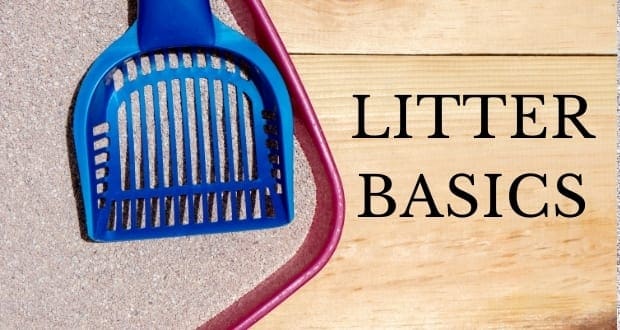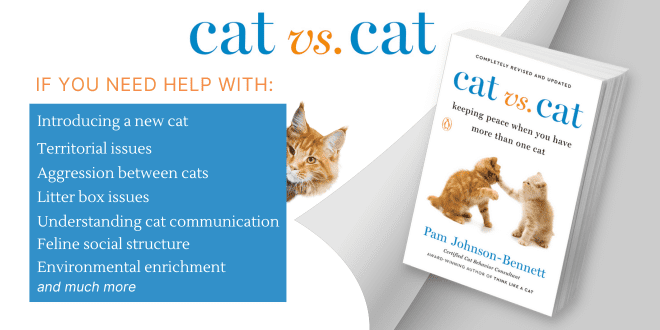
Listen to the audio version of this article
When it comes to litter substrate there are many choices. Many of those choices are designed to appeal to the human family member and not necessarily the cat who will be the one using the box.
Cats Can Have Preferences
In general, the most appealing type of litter to use is one that has a soft, sandy texture. Most of the scoopable, litters fit into this category because they have a very soft feel and when wet, the litter forms a solid ball that can be scooped up and removed from the litter box.
There are other types of litter made of corn, wheat, newspaper pellets, pebbles, you name it. Manufacturers spend lots of money trying to come up with the next greatest litter but the bottom line is that the cat has to want to use it. You may want to purchase a litter that is eco-friendly or has an appealing scent but if kitty doesn’t like it you’ve just wasted your money.
Litter Scent (or Lack of it) Matters
Forget all about the extra scented litter or the perfumed litter additives. All they do is attempt to cover an odor that won’t exist in the first place if you scoop on a regular basis. Your cat’s sensitive nose doesn’t need to be bombarded by an overpowering scent of flowers when she steps into the box; what she wants is to basically smell nothing or just her own scent.
Litter Texture
Many cats have texture preferences when it comes to litter substrate, food and even where they sleep. Pay attention to any preferences your cat may have when purchasing litter. Find a type that your cat likes and stick with that one. Many cats prefer a soft, sandy texture, so that’s something to keep in mind when shopping for litter.
Cleanliness is a Must in a Cat’s Book
No matter what type of litter chosen, the golden rule is you must keep the box clean. If the litter stinks it’s not your cat’s fault. Don’t cover up the odor by using sprays or additives — just scoop twice a day and completely change out the litter as often as necessary. Cats are clean animals and they deserve to have clean litter available to them. Their need for cleanliness in the litter box is based on their survival instinct. In an outdoor environment, cats dig, eliminate and then cover their waste so they don’t attract predators back to their core area. If the litter smells or waste, it becomes concerning to the cat.
Don’t Keep Switching Brands of Cat Litter
Cats are creatures of habit who take comfort in predictability so don’t make abrupt changes in the brand or type of litter you purchase. When kitty enters the litter box she will expect to feel the same texture on her paws she felt yesterday. If you must make a brand/type change, add a little of the new litter into the current brand so the switch occurs over the course of several days.
Not Sure What Litter to Buy?
If you’re adopting a cat, find out what litter was being used in her previous environment and start off with that to minimize any disruptions. If it’s not a litter you like, you can slowly make a change after the cat gets settled. If you’re bringing home a kitten, stick with an unscented, scoopable litter. A kitten is still in the learning stage so she doesn’t need to be confused by a highly scented litter or an alternative litter with a strange texture. Make it as easy as possible for the youngster.
If you think your cat may not like the current litter, set out a second box with a different brand to see if there’s a preference. You can even set out more boxes with different brands or types and let your cat make the decision.
Need More Information?
For more specific information on cat behavior and training, refer to any of the books by best-selling author Pam Johnson-Bennett. Pam’s books are available at bookstores and also online. We’ve included links to Amazon here on our website.
If you have a question regarding your cat’s health, please contact your veterinarian. This article is not intended as a replacement for your cat’s veterinary care.




